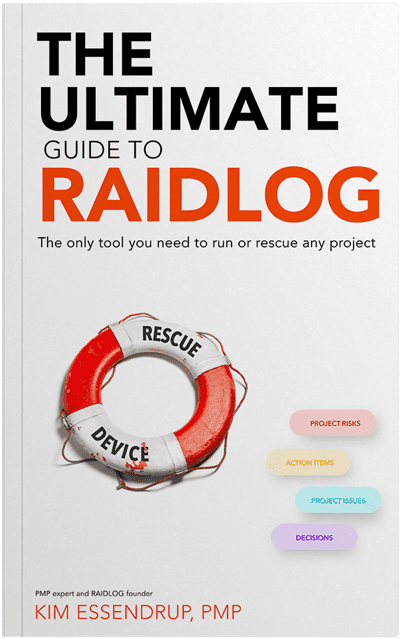Question: I thought the “A” and “D” in RAID stood for Assumptions and Dependencies?!
If you have used a RAID log before, you may have heard that the “A” and “D” in RAID stand for Assumptions and Dependencies. But in this book, we use Actions and Decisions instead – a seemingly small difference that has a huge impact on how your RAID log is used.
An Assumption is a condition that is assumed to be true when the scope, schedule and budget of your project were put together. For example, your project may be planned with the assumption that you have qualified developers in your organization, or that a system you are replacing will be operational until a certain date. Ideally these planning assumptions are documented at the same time the plan is.
A Dependency is something delivered by a party external to your project team, upon which some or all of your project depends on. For example, you may have an external dependency on the utility company turning-up power to your project site before the HVAC contractors can test the heating and cooling systems. You and your HVAC contractors need the power company to perform this activity, but since the power company is not on your project team, you may have little authority over this external dependency.
Assumptions and Dependencies are clearly important and should be tracked. They both carry an inherent risk in that if they do not happen as expected, your project will be impacted. For this reason, they should be treated as Risks in your RAID log, right alongside all your other risks. They are subject to the same analysis, prioritization, response planning and communication as any other risk. In fact, collecting all the assumptions and dependencies is the best way to start off your Risk log. This is why, with one notable exception which we will cover later, we typically treat Assumptions and Dependencies as Risks, not as separate categories of items.
Some project managers I work with prefer not to put dependencies in their RAID log, but feel they should be managed from their project schedule. This is quite useful as well as dependencies often have schedule impacts.
The most important difference between tracking Assumptions & Dependencies vs Actions & Decisions in a RAID log is how and when they are managed – which is why we treat them the way we do.
- Assumptions & Dependencies are typically identified at the beginning of a project and are input into the schedule and risk planning early on, then monitored through the project.
- Action items & Decisions for the most part, have to be actively managed throughout the entire lifecycle of the project and must constantly be captured and tracked.
